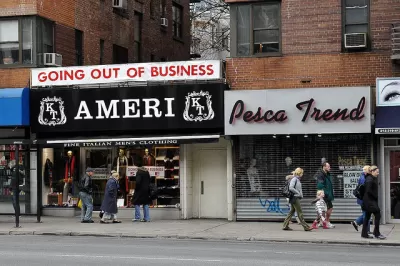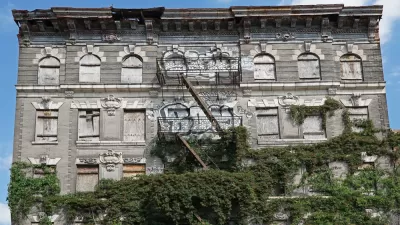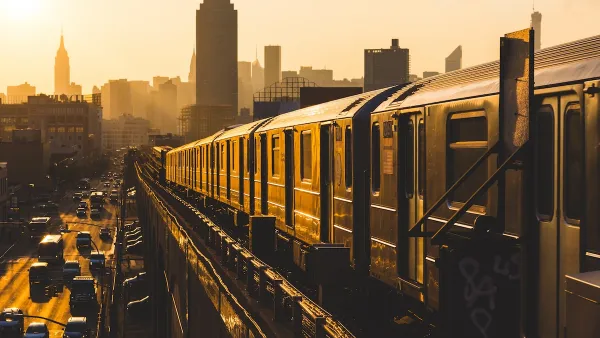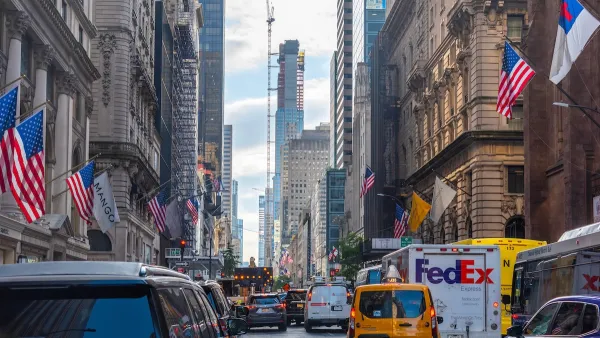Between 2016 and 2017 vacant store fronts nearly tripled in New York.

From Prospect Heights to Times Square, vacant commercial spaces are spreading all over New York. "A survey conducted by Douglas Elliman found that about 20 percent of all retail space in Manhattan is currently vacant, she said, compared with roughly 7 percent in 2016," Corey Kilgannon reports for the New York Times.
A growing economy is pushing up costs, especially in neighborhoods that are becoming wealthy. Other factors cited by retail watchers include the continued growth of online retail and a practice called "warehousing" store fronts. Some believe that property owners with the means to forgo rents will keep properties off the market in order to secure longer leases or higher rents. Mayor, Bill de Blasio, has said he would support a vacancy tax to try to dissuade the practice.
Whatever the cause, the effect is clear. "Soaring rents and competition from online shopping have forced out many beloved mom-and-pop shops, which many residents say decimates neighborhoods and threatens New York’s unique character," Kilgannon writes.
FULL STORY: This Space Available

Maui's Vacation Rental Debate Turns Ugly
Verbal attacks, misinformation campaigns and fistfights plague a high-stakes debate to convert thousands of vacation rentals into long-term housing.

Planetizen Federal Action Tracker
A weekly monitor of how Trump’s orders and actions are impacting planners and planning in America.

In Urban Planning, AI Prompting Could be the New Design Thinking
Creativity has long been key to great urban design. What if we see AI as our new creative partner?

How Trump's HUD Budget Proposal Would Harm Homelessness Response
Experts say the change to the HUD budget would make it more difficult to identify people who are homeless and connect them with services, and to prevent homelessness.

The Vast Potential of the Right-of-Way
One writer argues that the space between two building faces is the most important element of the built environment.

Florida Seniors Face Rising Homelessness Risk
High housing costs are pushing more seniors, many of them on a fixed income, into homelessness.
Urban Design for Planners 1: Software Tools
This six-course series explores essential urban design concepts using open source software and equips planners with the tools they need to participate fully in the urban design process.
Planning for Universal Design
Learn the tools for implementing Universal Design in planning regulations.
Gallatin County Department of Planning & Community Development
Heyer Gruel & Associates PA
JM Goldson LLC
City of Camden Redevelopment Agency
City of Astoria
Transportation Research & Education Center (TREC) at Portland State University
Jefferson Parish Government
Camden Redevelopment Agency
City of Claremont





























